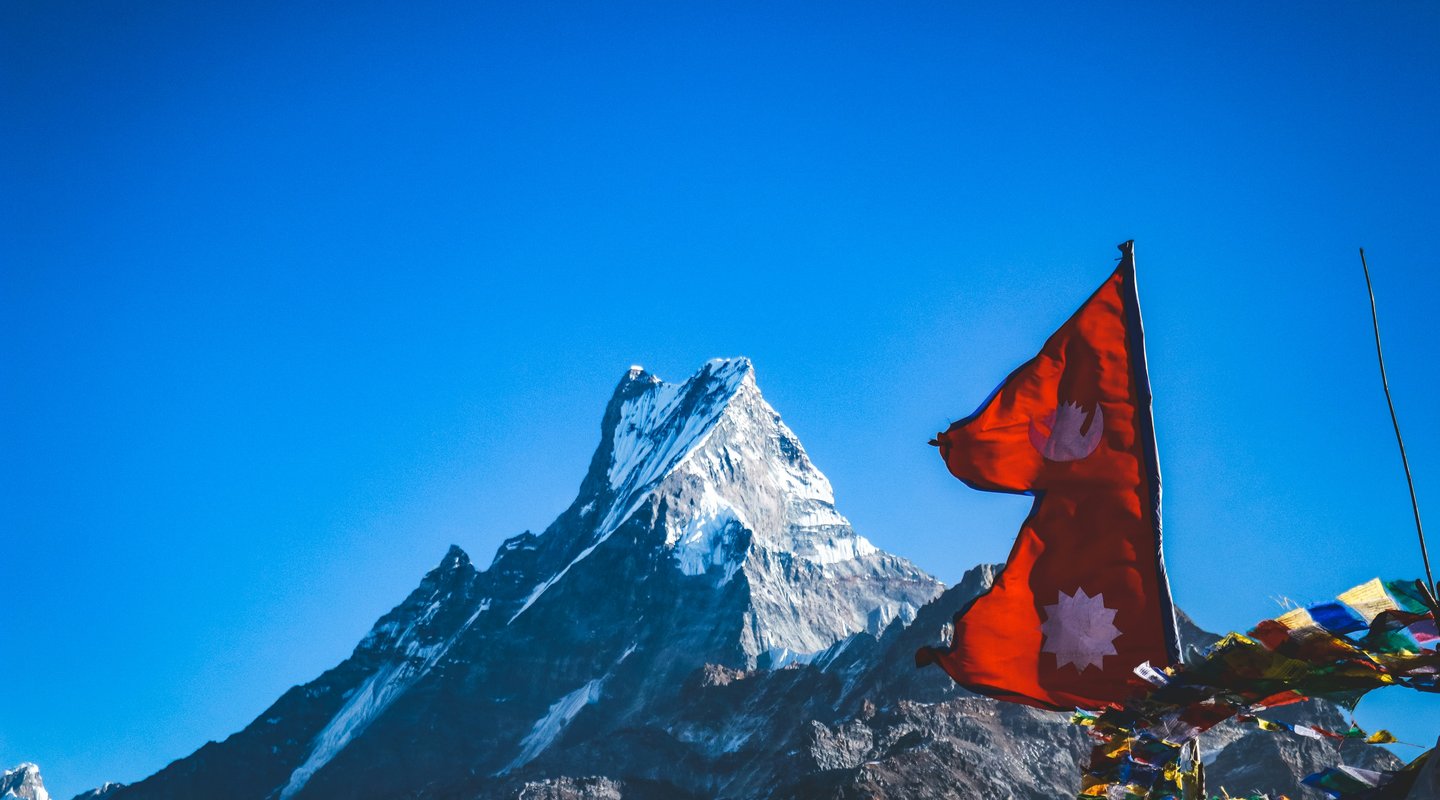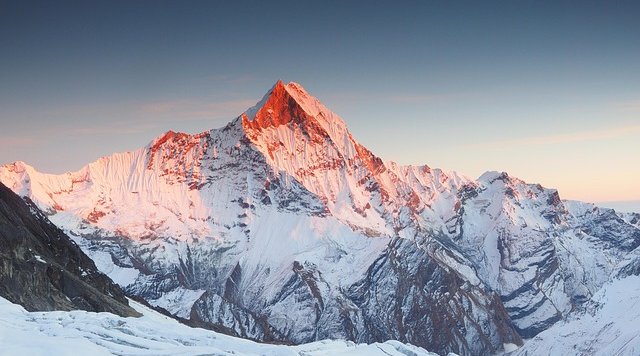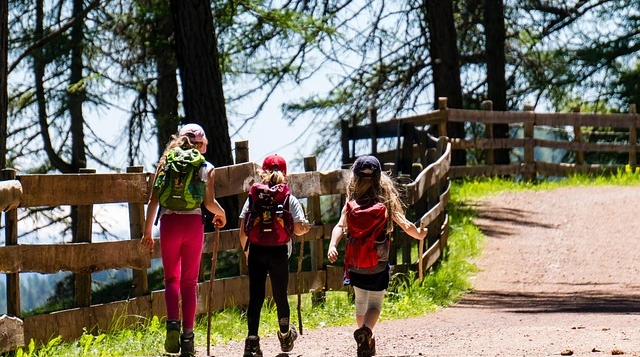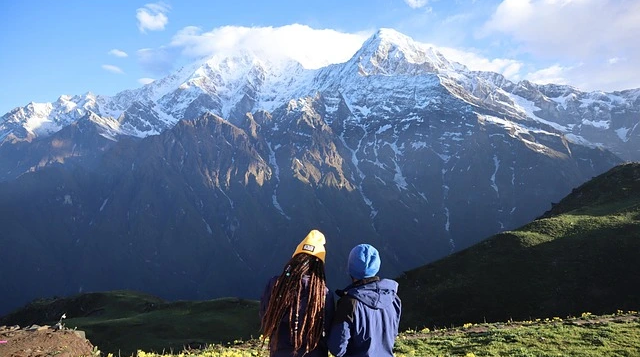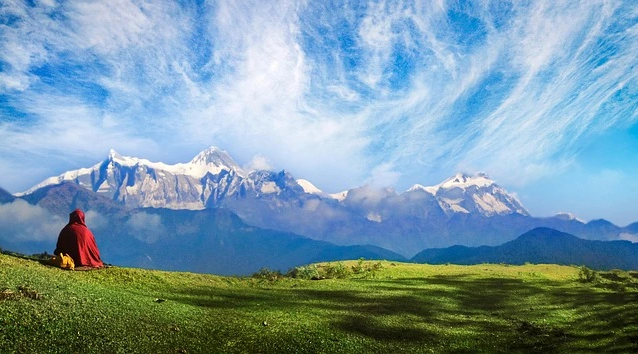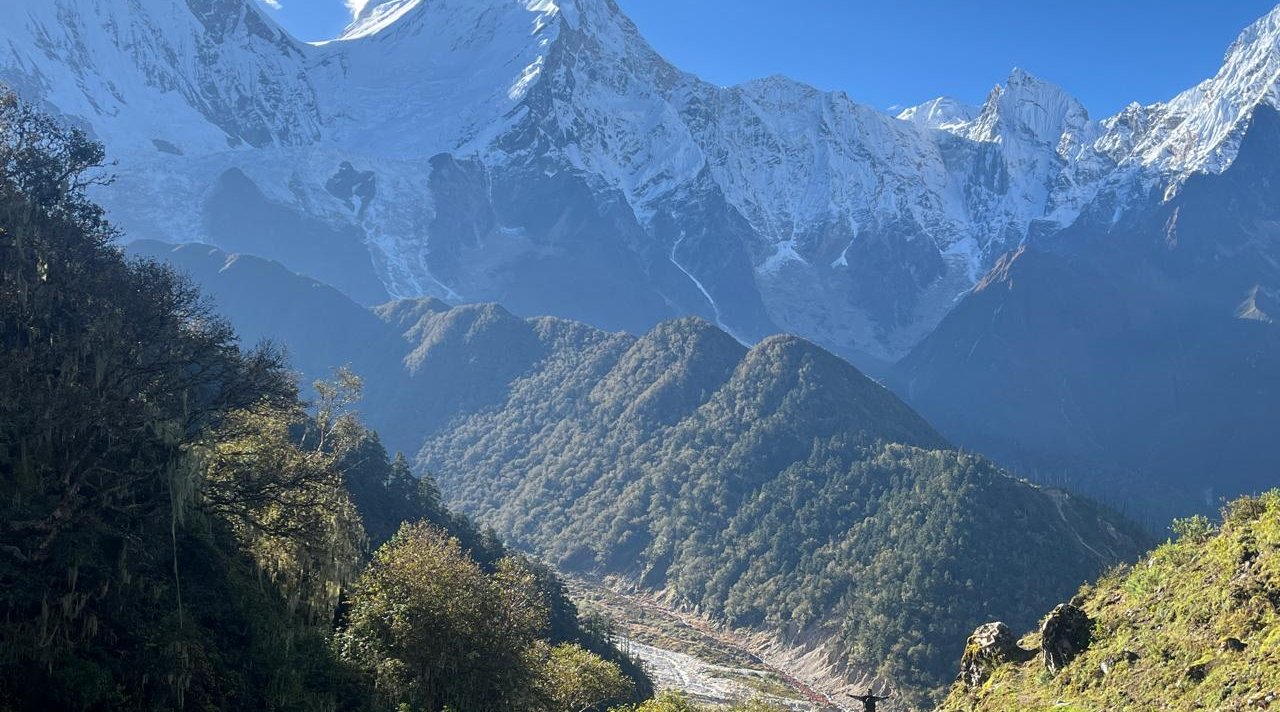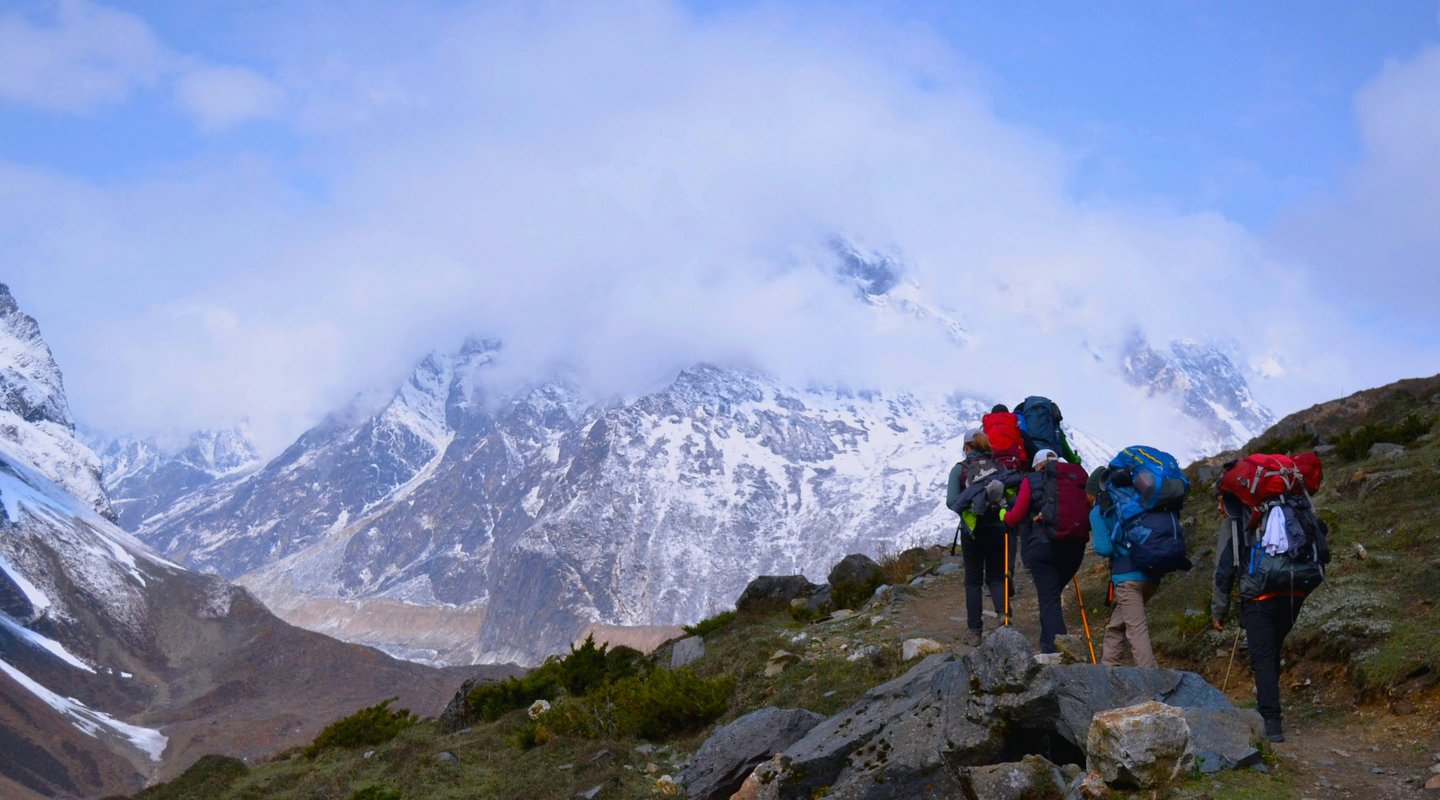Nepal's towering peaks and ancient trails beckon adventurers year-round, but choosing the best season for trekking in Nepal can make the difference between an unforgettable journey and a challenging ordeal. With the Himalayas' diverse climate zones and varying weather patterns, understanding when to trek is crucial for both safety and enjoyment.
This comprehensive guide explores Nepal's four distinct trekking seasons, helping you plan the perfect Himalayan adventure whether you're a first-time trekker or a seasoned mountaineer. From the rhododendron blooms of spring to the crystal-clear skies of autumn, each season offers unique experiences and considerations.
Overview of Nepal's Four Trekking Seasons
Nepal's trekking calendar is shaped by the monsoon cycle and altitude variations across different regions. The country experiences four distinct seasons, each presenting different opportunities and challenges for trekkers. Nepal's weather patterns are monitored by the Department of Hydrology and Meteorology, which provides official climate data for trekking season planning.
Spring (March-May): Known for blooming rhododendrons, moderate temperatures, and increasing visibility as the season progresses. This period offers excellent trekking conditions with fewer crowds than peak autumn season.
Recommended Trekking for Spring Season in Nepal
Summer/Monsoon (June-August): Characterized by heavy rainfall in most regions, though some rain-shadow areas like Upper Mustang and Dolpo remain accessible. Limited trekking opportunities in popular regions due to safety concerns.
Recommended Trekking for Monsoon Season in Nepal
Autumn (September-November): Considered the premier trekking season with clear skies, stable weather, and spectacular mountain views. Peak season brings larger crowds and higher accommodation costs.
Recommended Trekking for Autumn Season in Nepal
Winter (December-February): Cold temperatures limit high-altitude trekking, but lower elevation routes remain viable. Excellent for shorter treks and cultural experiences with minimal crowds.
Understanding these seasonal patterns helps determine the optimal time for your specific trekking goals, fitness level, and budget considerations.
Recommended Trekking for Winter Season in Nepal
Why Spring is Ideal for Nepal Trekking (March-May)
Spring emerges as one of the best seasons for trekking in Nepal, offering a perfect balance of favorable weather conditions, natural beauty, and manageable crowd levels. This season transforms the Himalayan landscape into a botanical paradise.
Weather Advantages in Spring
March through May provides increasingly stable weather patterns as winter's grip loosens. Temperatures gradually warm, making both daytime trekking and evening rest more comfortable. Clear morning skies typically give way to afternoon cloud build-up, creating dramatic mountain photography opportunities.
Temperature ranges: Daytime temperatures reach 15-20°C (59-68°F) at moderate altitudes, while nighttime temperatures remain cool but comfortable at 5-10°C (41-50°F). These conditions are ideal for Nepal trekking seasons for beginners as they're neither too hot nor extremely cold.
Rhododendron Blooms and Natural Beauty
Spring's crown jewel is the spectacular rhododendron blooming season. Nepal's national flower paints hillsides in brilliant reds, pinks, and whites from March through April. The Ghorepani-Poon Hill trek becomes particularly stunning, offering trekkers a chance to walk through natural galleries of blooming rhododendrons.
Beyond flowers, spring brings lush green landscapes as vegetation awakens from winter dormancy. This creates excellent contrast for mountain photography and provides diverse scenery throughout trekking routes.
Crowd Levels and Accommodation
Spring offers a significant advantage in terms of crowd management. Unlike autumn's peak season rush, spring provides more intimate trekking experiences with better accommodation availability. Lodge booking becomes less competitive, and trails feel less congested.
Cost considerations: Spring trekking often provides better value as accommodation prices haven't reached peak season levels. This makes it an attractive option for budget-conscious trekkers seeking quality experiences.
Why Autumn is Peak Season (September-November)
Autumn rightfully claims the title of best season for trekking in Nepal for most popular routes. The post-monsoon period brings unparalleled visibility, stable weather, and optimal trekking conditions across all major regions.
Crystal Clear Mountain Views
September through November offers the clearest mountain visibility of the year. Monsoon rains wash dust and haze from the atmosphere, creating pristine conditions for mountain photography. Everest Base Camp, Annapurna Circuit, and Langtang Valley treks all benefit from exceptional visibility during this period.
Visibility advantages: Morning mountain views extend to distances rarely possible during other seasons. The clarity allows trekkers to spot distant peaks and enjoy panoramic vistas that define the Himalayan experience.
Festival Season Cultural Immersion
Autumn coincides with Nepal's most important festivals, including Dashain and Tihar. Trekkers during this period experience authentic cultural celebrations in mountain villages, adding rich cultural dimensions to their adventures.
Cultural experiences: Local communities celebrate harvest festivals, creating opportunities for cultural exchange and authentic interactions. Villages come alive with traditional music, dance, and religious ceremonies.
Stable Weather Patterns
Post-monsoon weather systems provide remarkable stability. Clear mornings, minimal precipitation, and predictable weather patterns make route planning and safety management significantly easier.
Safety considerations: Stable weather reduces risks associated with sudden weather changes, making autumn ideal for high-altitude trekking and technical routes.
Spring vs Autumn Trekking Comparison
Choosing between spring vs autumn trekking Nepal requires understanding the distinct advantages each season offers. This detailed comparison helps you make an informed decision based on your priorities and preferences.
Weather and Temperature Conditions
Spring (March-May):
- Gradually warming temperatures create comfortable trekking conditions
- Daytime temperatures range from 15-20°C (59-68°F) at moderate altitudes
- Cool evenings at 5-10°C (41-50°F) provide pleasant rest periods
- Increasing stability as winter weather patterns fade
- Occasional afternoon cloud buildup creates dramatic mountain views
Autumn (September-November):
- Consistently cool and stable temperatures throughout the season
- Daytime temperatures range from 10-15°C (50-59°F) at moderate altitudes
- Crisp, clear mornings ideal for early morning trekking
- Nighttime temperatures can drop significantly, especially at higher altitudes
- Minimal weather fluctuations provide predictable conditions
Mountain Visibility and Photography
Spring Mountain Views:
- Good visibility that improves progressively through the season
- Morning clarity often gives way to afternoon haze or clouds
- Excellent contrast between blooming flora and snow-capped peaks
- Unique photographic opportunities combining flowers with mountain backdrops
- Dust and pre-monsoon haze can occasionally limit distant views
Autumn Mountain Views:
- Crystal clear visibility rated as the best of the year
- Post-monsoon atmosphere washed clean of dust and pollutants
- Exceptional clarity for distant peak identification and photography
- Consistent morning visibility extending to 100+ kilometers
- Minimal atmospheric interference creates sharp, defined mountain silhouettes
Crowd Levels and Trail Experience
Spring Trekking Experience:
- Moderate crowd levels increasing toward May
- More intimate trekking experiences on popular routes
- Better opportunities for wildlife spotting due to fewer disturbances
- Easier interaction with local communities
- Peaceful trail conditions ideal for meditation and reflection
Autumn Trekking Experience:
- Peak season brings maximum crowd levels
- Popular routes can feel congested, especially during peak weeks
- Vibrant social atmosphere with trekkers from around the world
- Established trail communities and shared experiences
- Higher energy levels and communal dining experiences in lodges
Accommodation and Booking Considerations
Spring Accommodation:
- Good availability across all major trekking routes
- Moderate pricing with better value for money
- Flexible booking options without extensive advance planning
- Lodge owners more willing to negotiate rates
- Backup accommodation options readily available
Autumn Accommodation:
- Limited availability requiring advance reservations
- Premium pricing during peak demand periods
- Booking 2-3 months in advance recommended for popular routes
- Higher risk of being turned away from preferred lodges
- Budget accommodations fill quickly, forcing upgrades to expensive options
Natural Beauty and Flora
Spring Natural Highlights:
- Spectacular rhododendron blooms from March through April
- Lush green landscapes as vegetation awakens from winter
- Diverse wildflower displays at various altitudes
- Fresh, vibrant forest colors providing excellent photography
- Active wildlife emerging from winter dormancy
Autumn Natural Highlights:
- Post-monsoon freshness with clean, crisp air quality
- Clear, defined landscapes without summer's excessive vegetation
- Excellent visibility of geological features and rock formations
- Harvest season colors in lower elevation agricultural areas
- Pristine snow conditions on higher peaks
Cost Comparison and Budget Considerations
Spring Trekking Costs:
- Moderate accommodation rates offering good value
- Competitive pricing for guides and porters
- Lower domestic flight prices compared to peak season
- Reasonable food costs in mountain lodges
- Better opportunities for budget-conscious trekkers
Autumn Trekking Costs:
- Premium pricing across all services during peak season
- Accommodation rates increase 20-40% above shoulder season
- Higher demand drives up guide and porter costs
- Limited budget accommodation options
- Domestic flight prices at yearly highs
Cultural Events and Festival Experiences
Spring Cultural Opportunities:
- Holi festival celebrations in March create colorful experiences
- Local spring festivals in mountain communities
- Planting season activities in agricultural villages
- Traditional ceremonies welcoming warmer weather
- Authentic cultural interactions without peak season commercialization
Autumn Cultural Opportunities:
- Dashain festival (September/October) - Nepal's most important celebration
- Tihar festival (October/November) - festival of lights
- Harvest celebrations in mountain communities
- Traditional post-monsoon religious ceremonies
- Enhanced cultural programs in tourist areas
Best Fit for Different Trekker Types
Spring is Ideal For:
- Nepal trekking seasons for beginners seeking forgiving conditions
- Photography enthusiasts interested in flora and landscapes
- Budget-conscious travelers seeking value
- Trekkers preferring smaller crowds and intimate experiences
- Those with flexible schedules who can adapt to changing conditions
Autumn is Ideal For:
- Experienced trekkers seeking optimal mountain views
- Photographers prioritizing crystal-clear peak photography
- Trekkers wanting predictable weather and stable conditions
- Those seeking vibrant social experiences with fellow trekkers
- Travelers willing to pay premium prices for peak conditions
This comprehensive comparison demonstrates why both seasons deserve recognition as the best season for trekking in Nepal, with the optimal choice depending on your individual priorities, experience level, and travel style.
Off-Season Trekking Opportunities
Winter Trekking in Nepal (December-February)
Winter trekking in Nepal offers unique advantages for adventurous trekkers willing to embrace colder conditions. While high-altitude routes become challenging, lower elevation treks provide excellent opportunities.
Recommended winter treks:
- Ghorepani-Poon Hill (3-4 days)
- Langtang Valley (lower sections)
- Helambu Circuit
- Kathmandu Valley rim treks
Winter advantages: Minimal crowds, significantly lower costs, crystal-clear mountain views on clear days, and authentic cultural experiences in villages. Daytime temperatures remain comfortable at lower elevations, though nights require proper cold-weather gear.
Considerations: Limited accommodation options as many lodges close for the season. Weather can be unpredictable with occasional snowfall affecting higher routes.
Monsoon Season Trekking (June-August)
Monsoon trekking in Nepal presents unique challenges and opportunities. While most regions experience heavy rainfall, certain rain-shadow areas remain accessible and offer spectacular experiences.
Rain-shadow destinations:
- Upper Mustang: Protected from monsoon by Annapurna and Dhaulagiri ranges
- Dolpo: Remote trans-Himalayan region with minimal rainfall
- Nar Phu Valley: Hidden valley with unique Tibetan culture
- Tsum Valley: Sacred valley with ancient monasteries
Monsoon advantages: Lush green landscapes, fewer crowds, lower costs, and unique cultural experiences in remote areas. Rain-shadow regions offer desert-like landscapes contrasting dramatically with typical Himalayan scenery.
Safety considerations: Increased risk of landslides, leeches, and flight cancellations in monsoon-affected areas. Proper gear and experienced guides become essential.
Essential Tips for Seasonal Trekking
Packing for Different Seasons
Spring packing essentials:
- Layered clothing system for temperature variations
- Light rain jacket for afternoon showers
- Sunscreen and sunglasses for increasing UV exposure
- Allergy medications for sensitive individuals
Autumn packing essentials:
- Warm layers for cold mornings and evenings
- Quality sleeping bag rated for expected temperatures
- Sturdy trekking boots for potentially icy conditions
- Extra batteries (cold weather drains power quickly)
Winter packing considerations:
- Heavy-duty cold weather gear
- Insulated water bottles
- High-calorie snacks for energy
- Emergency shelter options
Permits and Documentation
Permit requirements remain consistent across seasons, but processing times and availability can vary. Popular trekking permits include:
- TIMS (Trekkers' Information Management System): Required for most trekking areas
- ACAP (Annapurna Conservation Area Permit): For Annapurna region treks
- SAARC Permit: For certain restricted areas
- Special Permits: For remote regions like Upper Mustang and Dolpo
For detailed information about Nepal trekking permits and application procedures, refer to our comprehensive permit guide
Seasonal considerations: Peak season (autumn) may require advance permit booking due to higher demand. Some remote area permits have seasonal restrictions.
Acclimatization Strategies
Acclimatization principles remain constant across seasons, but seasonal factors influence implementation:
Spring acclimatization: Warmer temperatures may lead to faster fluid loss, requiring increased hydration awareness.
Autumn acclimatization: Stable weather allows for more predictable ascent schedules and safer acclimatization profiles.
Winter acclimatization: Cold weather increases caloric needs and affects sleep quality, potentially impacting acclimatization.
Festival Travel Considerations
Spring festivals: Holi celebrations may affect transportation and accommodation availability in March.
Autumn festivals: Dashain and Tihar create significant domestic travel demand. Book accommodations and flights well in advance during these periods.
Festival advantages: Experiencing local celebrations adds cultural richness to trekking experiences. Villages come alive with traditional activities and ceremonies.
Booking and Reservation Strategy
Peak season booking (Autumn): Reserve accommodations and domestic flights 2-3 months in advance. Consider flexible itineraries to account for weather delays.
Shoulder season booking (Spring): 4-6 weeks advance booking typically sufficient. Better flexibility for itinerary changes.
Off-season booking (Winter/Monsoon): Confirm lodge availability as many close seasonally. Focus on rain-shadow areas during monsoon.
Frequently Asked Questions
Is monsoon trekking in Nepal safe?
Monsoon trekking in Nepal can be safe in specific rain-shadow areas like Upper Mustang and Dolpo. However, most traditional trekking routes become dangerous due to landslide risks, poor visibility, and challenging trail conditions. Always consult local authorities and experienced guides before attempting monsoon treks.
Which season is best for Everest Base Camp trek?
The best season for Everest Base Camp trek is autumn (September-November), offering optimal weather conditions, clear mountain views, and stable temperatures. Spring (March-May) provides an excellent alternative with fewer crowds and blooming rhododendrons at lower elevations.
Can beginners trek in Nepal during winter?
Nepal trekking seasons for beginners include spring and autumn primarily. Winter trekking can be suitable for beginners on shorter, lower-altitude routes like Ghorepani-Poon Hill, but requires proper cold-weather gear and realistic expectations about conditions.
What's the cost difference between seasons?
Peak season (autumn) typically costs 20-40% more than shoulder seasons (spring) due to higher accommodation rates and flight prices. Winter and monsoon seasons offer the lowest costs but with limited options and challenging conditions.
Do I need different gear for different seasons?
Yes, seasonal gear requirements vary significantly. Spring requires versatile layering systems, autumn demands warm gear for cold conditions, winter necessitates heavy-duty cold weather equipment, and monsoon seasons require waterproof gear and leech protection.
How far in advance should I book seasonal treks?
Peak season (autumn) requires 2-3 months advance booking, spring needs 4-6 weeks, while off-seasons allow for more spontaneous planning but with limited accommodation options.
Conclusion: Choosing Your Perfect Trekking Season
Determining the best season for trekking in Nepal depends on your personal preferences, experience level, and specific goals. Spring offers blooming landscapes and moderate crowds, while autumn provides unparalleled mountain views and stable weather. Winter and monsoon seasons present unique opportunities for adventurous trekkers seeking off-the-beaten-path experiences.
Consider factors like crowd tolerance, budget flexibility, weather preferences, and cultural interests when making your decision. Both spring and autumn deliver exceptional trekking experiences, while the off-seasons offer authentic adventures for those willing to embrace additional challenges.
The key to successful seasonal trekking lies in thorough preparation, realistic expectations, and flexibility to adapt to changing conditions. Whether you choose the rhododendron blooms of spring or the crystal-clear skies of autumn, Nepal's mountains promise transformative experiences that will create lifelong memories.
Ready to plan your perfect Nepal trekking adventure?
Explore Himalayan Hero's seasonal trekking packages designed to maximize your experience during your chosen season. Our expert guides and carefully crafted itineraries ensure safe, memorable adventures regardless of when you choose to trek. Contact us today for a personalized quote and detailed seasonal recommendations based on your specific interests and experience level.
Experience the magic of the Himalayas during the season that speaks to your adventurous spirit – your perfect Nepal trekking season awaits!
Contact our expert team to customize your perfect Nepal Trekking experience:

